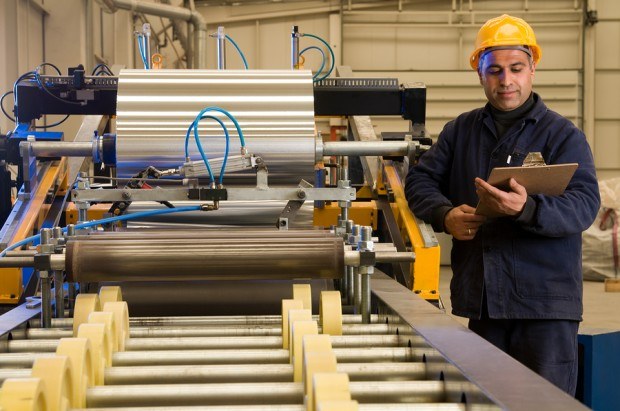Adding technology in the workplace can help injuries and deaths, especially in manufacturing, says a new white paper released by the National Safety Council.
“Robotics have long been deployed by organizations to improve operational efficiencies, but as companies increasingly look toward a more automated future, the many benefits this technology brings to workplace safety programs cannot be overlooked,” said Katherine Mendoza, senior director, workplace programs, NSC.
“Recent advancements in data science and artificial intelligence mean that robotic vehicles and arms aren’t just capable of augmenting complex, precise tasks alongside human workers, but in many instances can eliminate employees’ exposure to dangerous machinery and workplace hazards altogether,” she added.
In conjunction with its Work to Zero initiative, the new report identifies the five most common robot configurations available to employers — AMRs, Automated Guided Vehicles or AGVs, Articulated Robots, Humanoid Robots and Cobots — to assess their key benefits and applications.
The report highlighted several examples where the use of robots in the workplace can lead to safety improvements for workers. These include:
- Inspecting confined spaces and industrial facilities. Organizations in the construction, mining and logging industries may especially benefit from using wheeled AMRs to remove human workers from on-site hazards.
- Transporting parts, goods and materials. Used alongside sensors and computer vision, AMRs and AGVs can minimize the risk of human-machine collisions.
- Using robotic arms for precision cutting and welding, as well as the safe handling of toxic, high-temperature or explosive materials.
- Machine tending and parts repositioning by using robotic arms and AMRs to reduce risks associated with manual machine handling.
Adopting robotic technology can also help employers mitigate the risk of workplace musculoskeletal disorders, prevent falls from heights and reduce worker muscle fatigue, the report found.
Despite the many benefits of robotics, several barriers to widespread adoption exist.
According to the report, “while recent advancements have reduced the price and increased the viability of robotics for common industrial applications, costs of implementation and ongoing maintenance may still be prohibitive for smaller industrial operations.”
In some instances, AVG and AMR configurations could be disruptive to some work environments or may need to be coupled with additional safety technologies to effectively mitigate risk, the report stated.
“Employers must tailor their robotic technology to meet their unique safety needs and drive the return on investment.”
There also remains widespread concern that robotics may replace human workers.
Improved efficiency and safety aren’t the only benefits of robotics in the workplace, the report found.
Increased automation may reduce costs overall, potentially leading to increased investments and the creation of new jobs in other areas, like engineering, maintenance and programming.
A proactive approach is invaluable when considering the potential consequences of automation, the report found, suggesting retraining and reskilling programs for displaced workers.
Funded by the McElhattan Foundation, Work to Zero’s aim is to eliminate workplace fatalities through the use of technology. To learn more, visit nsc.org/worktozero.





















 Executive Utterances: On Presenting
Executive Utterances: On Presenting  ‘Dream Is in Sight:’ Chamber, Reinsurers, Insurers Urge Florida to Stay the Course
‘Dream Is in Sight:’ Chamber, Reinsurers, Insurers Urge Florida to Stay the Course  Why Insurance Telematics Integrations Fail
Why Insurance Telematics Integrations Fail  The Future of Knowledge in Insurance: From Training to AI-Powered Productivity
The Future of Knowledge in Insurance: From Training to AI-Powered Productivity 